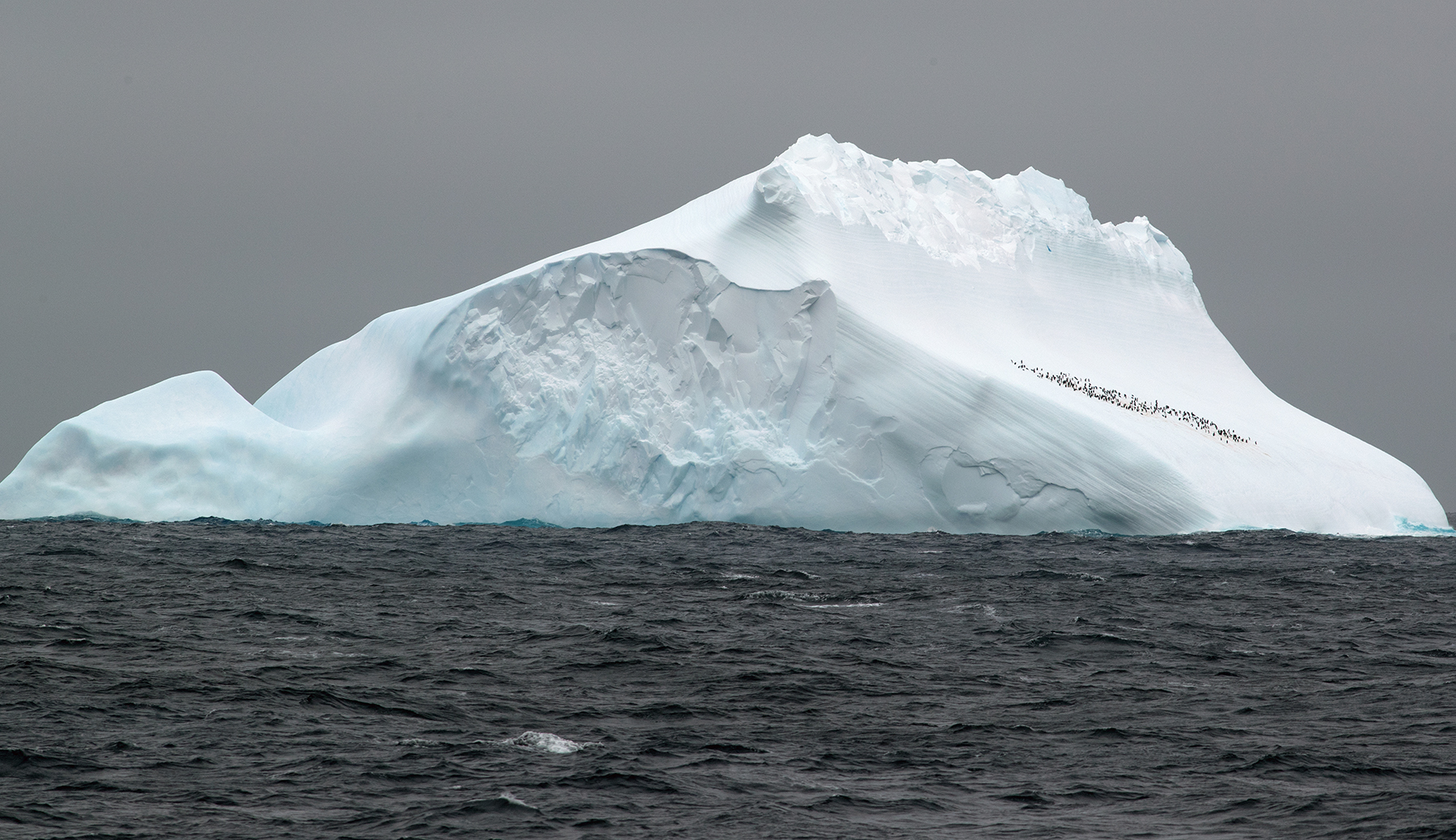No glacial fertilization effect in the Antarctic Ocean
Can iron-rich dust fertilize the ocean, stimulate algae growth there, and thereby capture carbon dioxide from the atmosphere? An international research team involving the University of Bern and led by the University of Bonn used deep-sea sediment cores from the Scotia Sea to investigate whether this hypothetical greenhouse gas sink had an effect during ice ages. Although dust input was high during ice ages, no evidence of a fertilization effect could be found in the Antarctic Ocean.
Changes in the concentration of atmospheric carbon dioxide (CO2) are considered to be the main cause of past and future climate change. A long-standing debate centers on whether the roughly 30 percent lower CO2 content of the ice-age atmosphere was caused by iron fertilization. It is argued that iron-rich dust is carried into the ocean by wind and water, where it stimulates the growth of algae that absorb more CO2. As the algae die and then sink permanently into the depths of the ocean, the CO2 also remains there like in a trap. Although there is clear evidence that dust input increased during the ice ages, the fertilization effect is controversial, at least for the Antarctic Ocean.
In a recent study, an international team of 38 researchers from 13 countries led by Dr. Michael Weber from the Institute for Geosciences at the University of Bonn investigated this question. As part of the Integrated Ocean Discovery Program (IODP), the team traveled to the Scotia Sea on the drillship «Joides Resolution» and spent two months in 2019 bringing up cores from the seafloor at depths of 3,000 to 4,000 meters. Weber: «We collected the highest-resolution and longest climate archive ever obtained near Antarctica and its main dust source, Patagonia».
1.5 million years of climate history
In the 200-meter-long deep-sea core U1537, the climate history of the last 1.5 million years was recorded in detail. This allows the reconstruction of the dust input to be nearly doubled, since Antarctic ice cores only cover the last 800,000 years. Current records from the deep ocean show that dust deposition during the ice ages was actually five to 15 times higher. This is also reflected in the ice cores.
However, the researchers found no evidence of a fertilization effect from dust in the Antarctic Ocean during the ice ages. Rather, the production of algae, for example, and thus carbon CO2 sequestration, was high only during warm periods when dust input into the Scotia Sea was low. This means that during cold periods, other processes prevented the CO2 captured in the ocean from escaping into the atmosphere and triggering warming. The main factors here are much more extensive sea ice cover, more intense stratification in the ocean, and reduced dynamics of the current systems, which contributed to a reduction in the CO2 content of the atmosphere during cold periods.
The analysis of diatom concentrations in the sediment cores was of central importance for this study. The Sedimentary Geochemistry research group headed by Hendrik Vogel at the Institute of Geology, University of Bern and the Oeschger Centre for Climate Change Research (OCCR) has developed a method that enables the analysis of diatom concentrations in sediments. «The analysis method, which is based on infrared spectroscopy, has a high degree of accuracy at relatively low costs and is therefore ideally suited for large-scale international research projects in which several kilometers of sediment core have to be analyzed», says Hendrik Vogel.
The opposing trends in dust deposition and oceanic productivity during the ice ages and interglacial periods of the Pleistocene are accompanied by long-term, gradual changes in the climate system in the southern polar region. Bioproductivity was particularly high during the interglacial periods of the last 400,000 years, but during the mid-Pleistocene transition 1.2 million to 700,000 years ago, it differed little from that during cold periods. As the transition progressed, the dust input covered larger and larger areas in the Southern Hemisphere. Abrupt changes continued to occur 900,000 years ago, indicating greater glaciation of Antarctica.
«There is indeed evidence of a fertilization effect during the ice ages in cores outside the Antarctic zone», Weber concludes. «However, our study shows that atmospheric CO2 fluctuations do not depend solely on iron fertilization from dust deposition. In the Antarctic Ocean, it is rather a complex interplay of a westerly wind system, productivity, and feedback with sea ice. This relationship has been consistent over the last 1.5 million years».
Source: University of Bonn
Participating institutions and funding:In addition to the University of Bonn, the Alfred Wegener Institute, Helmholtz Centre for Polar and Marine Research Bremerhaven, the GEOMAR Helmholtz Centre for Ocean Research Kiel and research institutions from England, the USA, Australia, Argentina, China, Brazil, Spain, Switzerland, the Netherlands, Japan, Denmark, India and Korea were involved in the study. The German Research Foundation, the British Natural Environmental Research Council and the United States National Science Foundation provided the funding. |
PublicationWeber, M.E., Bailey, I., Reilly, Hemming, S., Martos, Y.M., Reilly, B.T., Ronge, T., Brachfeld, S., Williams, T., Raymo, M.E., Belt, S.T., Smik, L., Vogel, H., Peck, V., Armbrecht, L., Cage, A., Cardillo, F.G., Du, Z., Fauth, G., Fogwill, C.J., Garcia, M., Garnsworthy, M., Glueder, A., Guitard, M., Gutjahr, M., Hernandez-Almeida, I., Hoem, F., Hwang, J.-H., Iizuka, M., Kato, Y., Lee, B.,O’Connell, S., Pérez, L.F., Seki, O., Stevens, L., Tauxe, L., Tripathi, S., Warnock, J., and Zheng, X.: Antiphased dust deposition and productivity in the Antarctic Zone over the past 1.5 Ma. Nature Communications, DOI: https://doi.org/10.1038/s41467-022-29642-5. |
About IODPThe International Ocean Discovery Program (IODP) is an international marine research collaboration that explores Earth's history and dynamics using ocean-going research platforms to recover data recorded in seafloor sediments and rocks and to monitor subseafloor environments. IODP depends on facilities funded by three platform providers with financial contributions from five additional partner agencies. Together, these entities represent twenty-one nations, including Switzerland, whose scientists are selected to staff IODP research expeditions conducted throughout the world's oceans. |
2022/04/19

